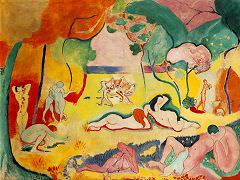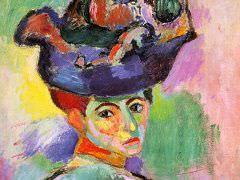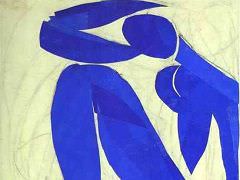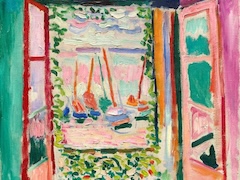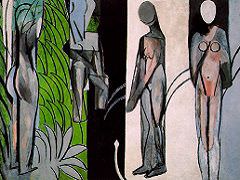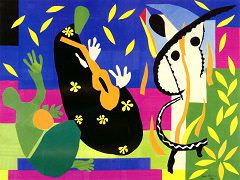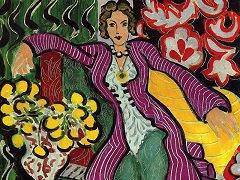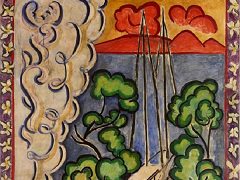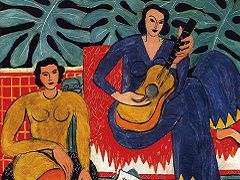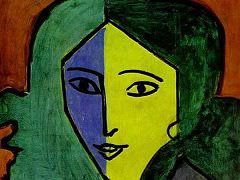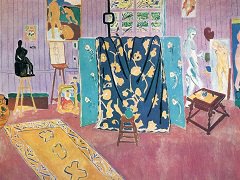Luxe, Calme et Volupté, 1904 by Henri Matisse
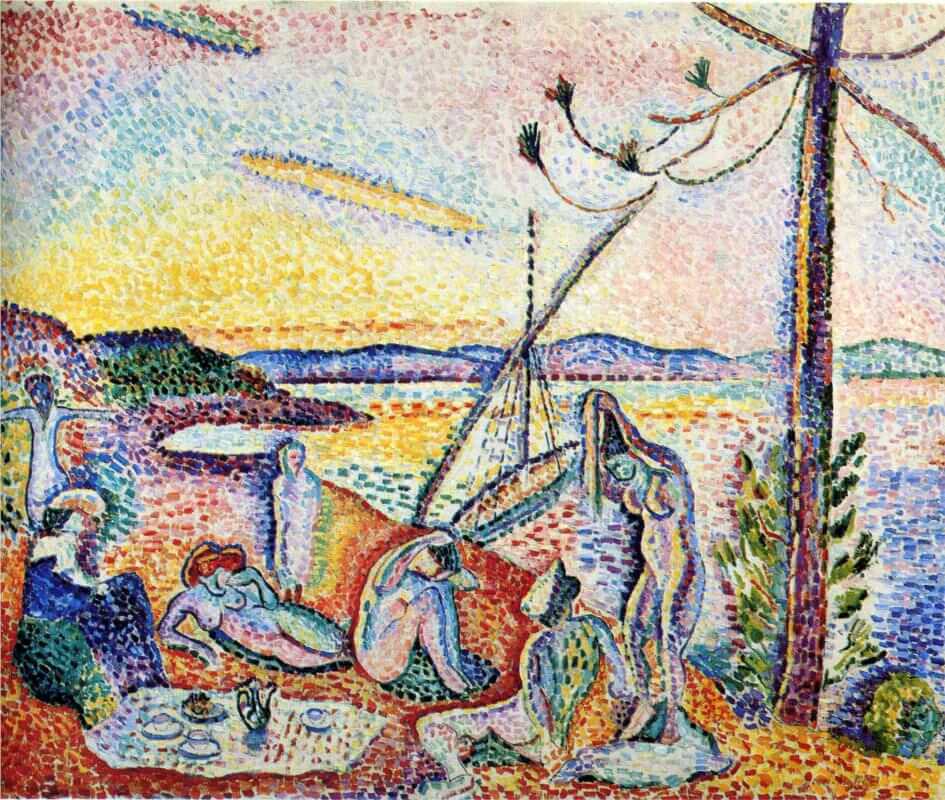
Luxe, Calme et Volupté takes its name from the refrain of Charles Baudelaire's poem, Invitation to a Voyage (1857), in which a man invites his lover to travel with him to paradise. The painting shares the poem's subject: escape to an imaginary, tranquil refuge.
From late 1899, Matisse spent a great deal of time in the museums, but also in avantgarde galleries such as Ambroise Vollard's, wherein 1899 he bought a drawing by Van Gogh, a painting by Gauguin ('Young Man with Tiare Flower'), and Paul Cezanne's Three Bathers. From 1900 to 1904, Cezanne was a decisive influence on Matisse, and over the years, Three Bathers remained an immense inspiration and affirmation to Matisse.
In 1904, Henri Matisse participated in a joint show at the Salon d'Automne (founded in 1903) and in 1904 had his first solo exhibition at Ambroise Vollard's gallery. In 1905 at the Salon des Independants he exhibited the painting Luxe, Calme et Volupté, which was promptly bought by Paul Signac. Matisse had got to know Signac one summer in St. Tropez, and had read his book 'From Eugene Delacroix to Neo-Impressionism' as early as 1898 or 1899. Method of analyzing colour by Neo-Impressionists such as Georges Seurat and Paul Signac, appealed to Matisse, and he adopted it as a means of modeling light through colour. For his conception, Matisse was indebted to Three Bathers of Paul Cezanne, but his use of colour was an analytic separation into small planes. If Matisse had hoped that this mosaic approach would create a new unity of effect he was to be disappointed, and himself wrote:
Breaking up colour leads to the breaking-up of form and outline. What you are left with is an all-too-apparent surface, nothing but a tease of the retina that destroys the repose of surface and outline."
The forms in the painting - the figures, tree, bush, sea and sky - are created from spots of color, jabs of the brush that build up the picture. Matisse favored discrete strokes of color that emphasized the painted surface rather than a realistic scene. He also used a palette of pure, high-pitched primary colors (blue, green, yellow, and orange) to render the landscape, and then outlined the figures in blue.
Matisse said,
What I dream of is an art of balance, of purity and serenity, devoid of troubling or depressing subject matter."
Matisse wasn't interested in conflict or politics. This is an early painting by Matisse, and yet the idea of balance and serenity found here would remain a consistent theme in his work throughout the next 50 years.

